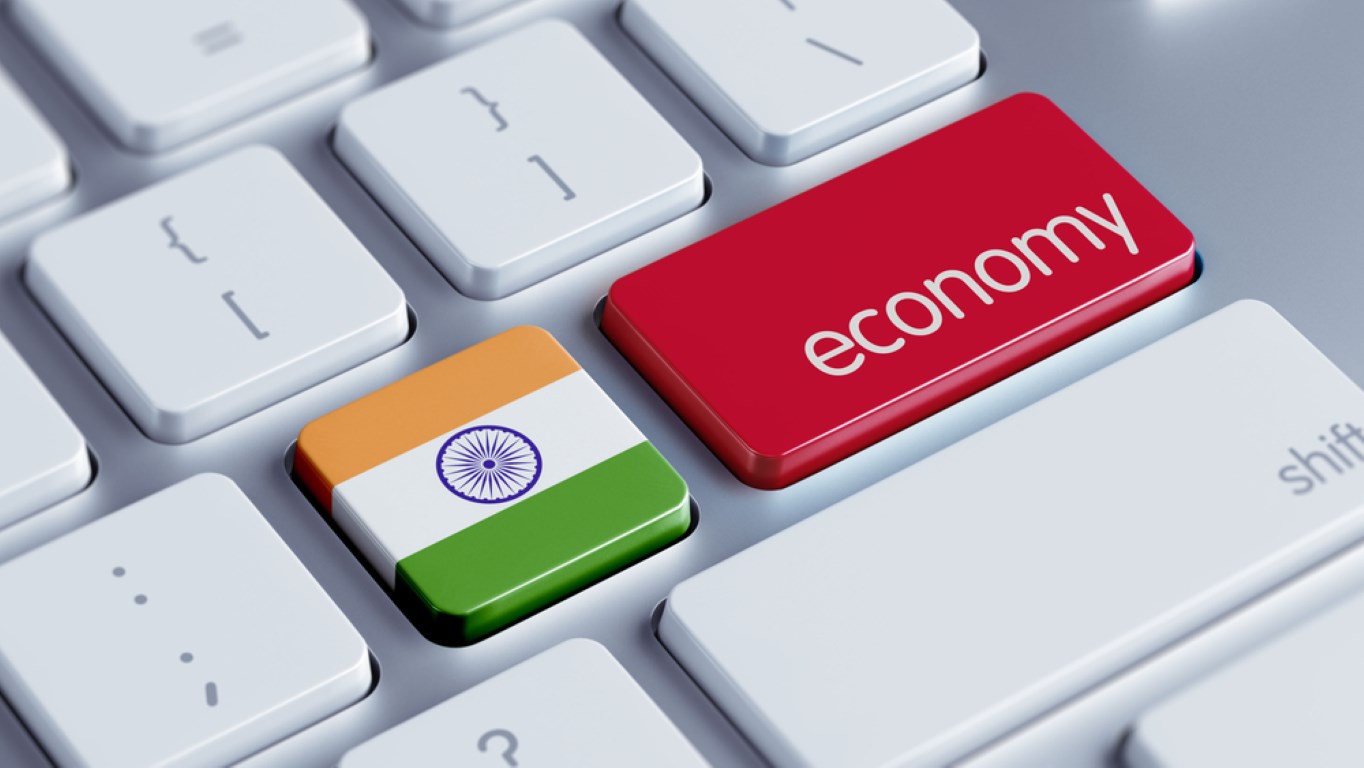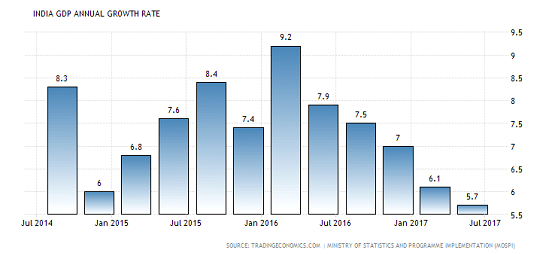Moody’s upgrades India
November 20, 2017 | Expert Insights

Global rating agency Moody’s Investors Services has upgraded India’s sovereign local and foreign currency issuer ratings to Baa2 from Baa3. This is the first upgrade for the first time in 14 years, taking cognizance of the Centre’s ongoing reforms such as the new Goods and Services Tax (GST) regime and the mechanisms for resolving bad loans and re-capitalize ailing public-sector banks.
Hours after the ratings were announced, Moody’s upgraded four financial ratings including India’s largest lender State Bank of India and country’s most valuable lender HDFC Bank.
Background
India’s economy can be described as a developing economy. It is the world's seventh-largest economy by nominal Gross Domestic Product. It is also the third largest economy in terms of Purchasing Power Parity (PPP). However, it ranks at 141 in per capita GDP (nominal).
The Indian economy experienced a huge spurt in its growth rate in the 1990s. This has been attributed to abolishment of the License Raj system that had been in place from 1947 to 1990. Thus, India was able to achieve a growth rate of 6-7% annually. It became one of the fastest growing major economies in the world. In June 2017, it was revealed that India’s economic growth had slowed to 6.1% in the fourth quarter ending March 2017 as compared with 7.1% in the previous quarter. The growth rate has further slowed down during the April-June period to 5.7%. This is a three-year low.
The economic slowdown has been attributed to the effects from demonetization and the roll out of GST. Between the months of April and June, it grew by 5.7%. This is a three-year low.
India has jumped 30 spots and has been ranked 100 in World Ease of Doing Business index for 2018. This has been attributed to a series of reforms improving the access to credit, power supplies and protection of minority investors. India has slipped 21 spots in the World Economic Forum’s Global Gender Gap and is now ranked 108 out of 144. It is the lowest the nation has ranked since the body began measuring gender gap in 2006.

Analysis
Global rating agency Moody’s Investors Services has upgraded India’s sovereign local and foreign currency issuer ratings to Baa2 from Baa3. This is the first upgrade for the first time in 14 years, taking cognizance of the Centre’s ongoing reforms such as the new Goods and Services Tax (GST) regime and the mechanisms for resolving bad loans and re-capitalize ailing public-sector banks.
Hours after the ratings were announced, Moody’s upgraded four financial ratings including India’s largest lender State Bank of India and country’s most valuable lender HDFC Bank.
“The government's credit strength is an important input in Moody's deposit and debt ratings for financial institutions, because it impacts Moody's assessment of the government's capacity to provide support in times of stress,” the rating agency said in a statement. “As such, an improvement in the government's own creditworthiness, as measured by its sovereign rating, has lifted the supported ratings for EXIM India, IRFC and SBI.”
Moody’s Investors Service explained its upgrade for the Indian government’s rating noting, “In the meantime, while India's high debt burden remains a constraint on the country's credit profile, Moody's believes that the reforms put in place have reduced the risk of a sharp increase in debt, even in potential downside scenarios.”
The agency also stated that it held a positive outlook on the nation’s growth potential adding, “Longer term, India's growth potential is significantly higher than most other Baa-rated sovereigns. While a number of important reforms remain at the design phase, Moody's believes that those implemented to date will advance the government's objective of improving the business climate, enhancing productivity, stimulating foreign and domestic investment, and ultimately fostering strong and sustainable growth. The impact of the high debt load is already mitigated somewhat by the large pool of private savings available to finance government debt. Robust domestic demand has enabled the government to lengthen the maturity of its debt stock over time, with the weighted average maturity on the outstanding stock of debt now standing at 10.65 years, over 90% of which is owed to domestic institutions and denominated in rupees.”
Assessment
Our assessment is that Moody’s rating will be a boost to the Indian government. This will bolster more investors and organizations to invest in India. However, the Indian government has to continue introducing economic reforms in order to sustain the growth.








Comments